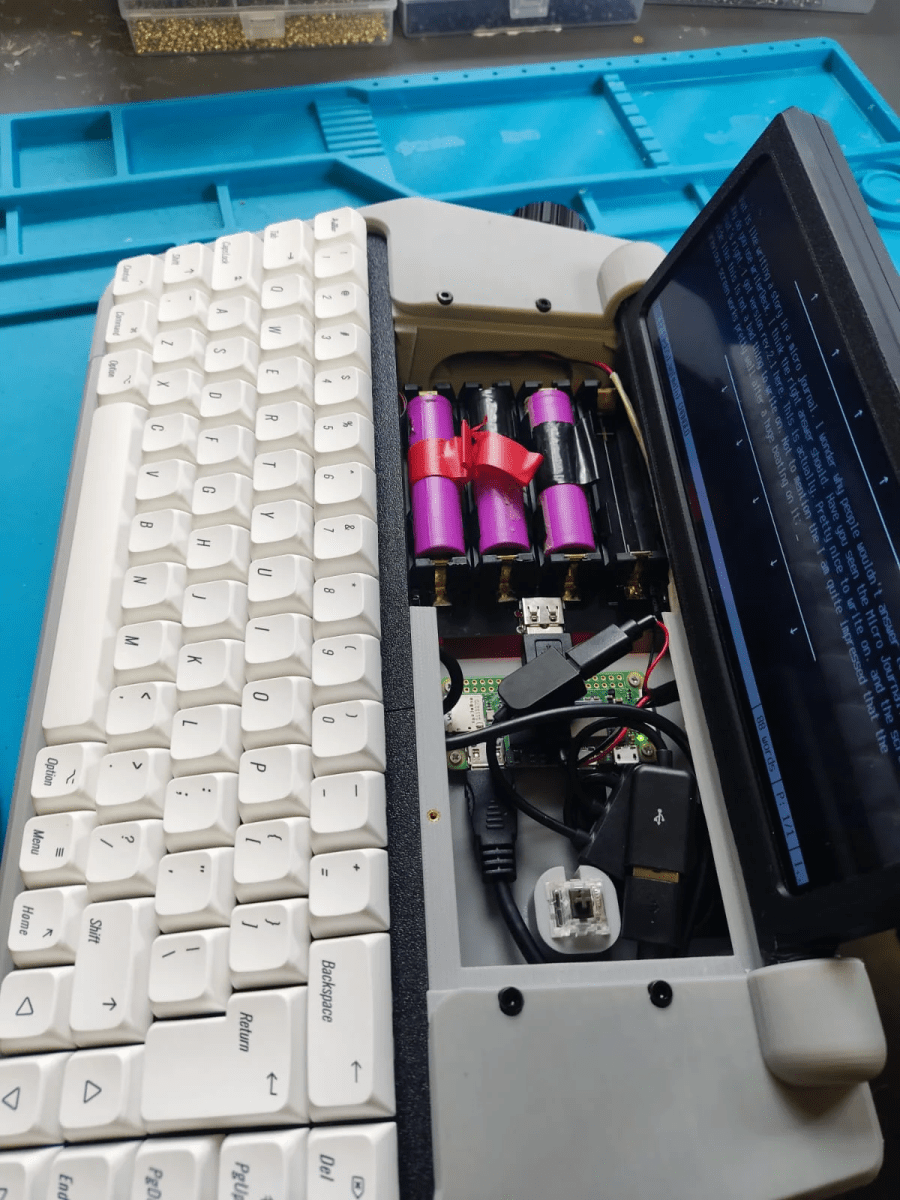
A “cyberdeck” is a portable, handmade computer inspired by William Gibson’s science fiction of the 1980s. It’s basically a cyberpunk laptop. A “writerdeck,” then, is a similar concept but only for writing text. I’ve been dabbling with some commercial options lately. But I think both device categories might just have a new champion: the Micro Journal Rev 2.1. Look at this beautiful thing. Just look at it!
Un Kyu Lee has been designing, 3D-printing, and hand-assembling a series of Micro Journal gadgets for the last couple of years, painstakingly documenting his efforts on YouTube and /r/writerdeck. Rev 2.1 is actually his 10th generation (at least) and a gentle revision of an earlier model. Lee’s choices are eclectic and highly personal—he’s got everything from a full-on mini-laptop design to a device that’s just a 2.8-inch screen you plug a keyboard into. One of his latest projects was creating a new, retro-futurist housing for an AlphaSmart Neo 2, a classic in the admittedly niche category of writing-only devices from the 90s and 2000s.
But having followed his work for some time, I think the Micro Journal 2.1 may be his masterpiece. It uses a 65% mechanical keyboard with a standard layout, which is more user-friendly than some of the ortholinear keyboards in other Micro Journals. It has a full LCD screen instead of e-ink for faster response, and at 8 inches wide it’s relatively huge compared to most of the displays on earlier Micro Journals. It has built-in batteries for portability, though they are AA and need to be swapped out by hand. Documents can be accessed via a web interface from another device or manually moved over from a USB drive.
And it’s powered by a Raspberry Pi Zero 2 W, so you can keep it running WordGrinder (the focused writing environment that’s loaded on by default) or flash it with a huge variety of other operating systems compatible with the semi-standardized micro-computer. You could even turn it into a classic game emulator if you wanted to. (Please don’t do that. Mr. Lee is a nice guy and I think it might cause him pain if he saw it.)
The design looks like a beautiful blend of suitcase typewriters and classic all-in-one PCs from the 80s, something that would fit right at home next to a Commodore 64 or Osborne 1. And those round knobs on the side aren’t just decorative! They’re up/down and left/right buttons, giving even more satisfying tactility to the gadget.

Un Kyu Lee
You can buy the Micro Journal 2.1—along with some of his earlier designs—from Un Kyu Lee’s Tindie shop. (It costs $359 USD if you’re wondering, which is a lot less than some similar, less-capable designs in the Pomera and Freewrite lines.) But these things are quickly becoming hard-to-find collector’s items, as Lee builds each one by hand and only has time for very limited runs.
If you have access to a soldering iron and a 3D printer, and if you’re up to the challenge, you can build it yourself. As a devotee of open-source software and hardware, Lee gives away the print files, instructions, and a bill of materials for all his Micro Journal devices on Github.
Author: Michael Crider, Staff Writer, PCWorld

Michael is a 10-year veteran of technology journalism, covering everything from Apple to ZTE. On PCWorld he’s the resident keyboard nut, always using a new one for a review and building a new mechanical board or expanding his desktop “battlestation” in his off hours. Michael’s previous bylines include Android Police, Digital Trends, Wired, Lifehacker, and How-To Geek, and he’s covered events like CES and Mobile World Congress live. Michael lives in Pennsylvania where he’s always looking forward to his next kayaking trip.